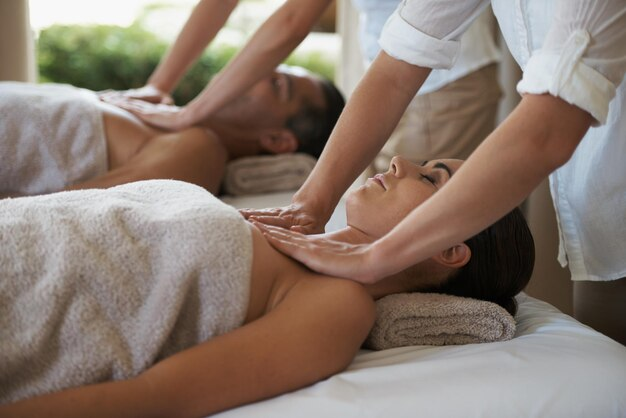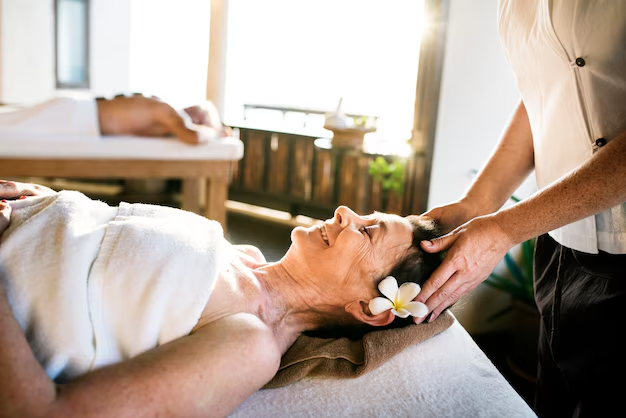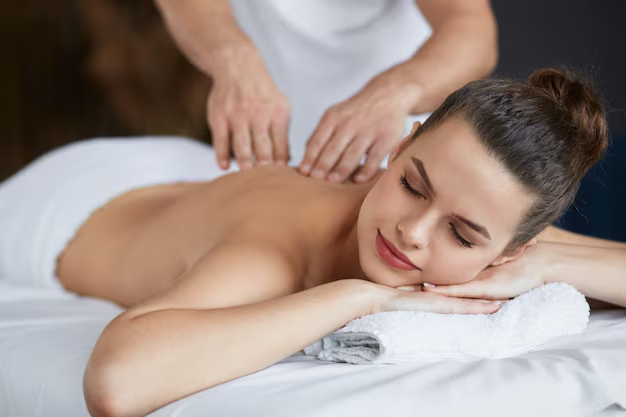
Massage therapy has passed a lot of scientific research in which positive effects concerning the physical and mental state of any person were found. Therefore, it can help to relieve pain and facilitate moving blood circulation in the body. Let’s consider some of the studies carried out and their further use. By knowing the crucial key findings about massage therapy that illuminate how it encourages wellness.
What does research say about massage therapy for pain relief?
Research says that massage therapy effectively reduces pain, particularly in conditions like chronic back pain and arthritis. It improves circulation and relaxes muscles, offering relief for those seeking non-invasive treatments.
Generally speaking, regular massage has been proven to decrease the intensity of pain to considerable amounts for clients with chronic conditions, including lower back pain, osteoarthritis, and fibromyalgia. It works by augmenting blood supply to the affected parts of the body hence reducing inflammation and the stiffness of muscles.
Furthermore, massage activates the release of endorphins that work as natural painkillers. This is supported by clinical evidence of improvements in mobility, quality of life, and pain control over time with regular massage sessions. In fact, the role it plays in long-term pain management is indeed very crucial since it offers a non-invasive alternative.
How does massage therapy impact stress and anxiety according to research?
According to research massage therapy lowers stress and anxiety by reducing cortisol levels and promoting relaxation. It triggers the body’s natural relaxation response, improving mental well-being.
Numerous studies have shown how massage therapy significantly reduces the levels of stress hormones-cortisol, increases serotonin, and dopamine levels-chemical compounds that display happiness and feeling relaxed. The subjects manifested relatively fewer anxious moments and more psychosomatic comfort after the massage sessions.
The parasympathetic nervous system, when stimulated by the massage therapy, subsequently allows a person to be in a calmer mind frame with less stress produced. Regular treatment has been known to serve as a corrector of the clinical signs present in generalized anxiety disorder and improve emotional balance, hence both short- and long-term benefits for mental well-being.

What is the scientific evidence for massage therapy improving circulation?
The scientific evidence for massage therapy improving circulation shows that it increases blood flow and oxygen delivery to tissues. This process aids in muscle recovery, reduces soreness, and removes metabolic waste, supporting overall cardiovascular health.
Research evidence has shown that massage impacts circulation positively, via vasodilation, increasing the rate of blood flowing out through the vessel walls into tissues. Improved circulation will keep oxygenated blood and nutrients moving more proficiently toward damaged tissue repair; it also removes metabolic waste products such as lactic acid.
Research studies further indicate that daily massage can also help prevent the occurrence of blood clots among inactive or recently hospitalized patients. The improvement in circulation is one of the main reasons why massage therapy is really important for maintaining an overall healthy cardiovascular system and assisting the body to recover naturally.
How does massage therapy influence immune function according to studies?
According to studies, massage therapy influences immune function by boosting the activity of natural killer cells and reducing inflammation. This strengthens the body’s defenses against infections, contributing to better overall health and immune support.
Scientific studies revealed massage therapy acts to enhance the functions of the immune system by stimulating the activities of natural killer (NK) cells, which work to protect the body from viruses and bacteria. It also illustrates the actual decrease in inflammatory cytokines, which are substances that enhance the impacts of immune-related conditions.
Therefore, it can be deduced that regular massage sessions would maintain normal immunity in chronic stressors or people whose ways of life tend to keep them under perpetual stress, known to suppress the operations of the immune system. This makes massage therapy very wholesome for general health and wellbeing because it enhances body defense systems.
What does research say about the effects of massage therapy on sleep?
Research says massage therapy improves sleep by promoting relaxation, reducing insomnia symptoms, and increasing serotonin levels. This enhances both physical recovery and mental calm, leading to deeper, more restful sleep.
Many studies indicate that massage therapy significantly improves sleep quality, especially in insomniacs or those whose sleep is disrupted. The therapy promotes relaxation, decreases the hormones produced due to stress, and increases serotonin, the precursor to the sleep-regulating hormone melatonin.
Results from clinical trials include longer, deeper sleep and greater satisfaction with sleep at wake-up. Massage therapy also improves the quality of sleep as the pain from physical discomfort diminishes interference with sleep; therefore it is a holistic treatment method toward total relaxation of both the body and mind. Quality sleep helps in heightened well-being and recovery.

How does massage therapy benefit athletes according to research?
Research shows that massage therapy benefits athletes by speeding muscle recovery, reducing soreness, and improving flexibility. It also enhances performance and prevents injury, making it an essential tool for both pre- and post-workout recovery.
In scientific studies, researchers have observed that massage therapy is helpful for athletes because they are relieved from the negative effects of DOMS and enhanced muscular flexibility. Massage can increase the flow of blood through the muscles; it removes waste products from the process of metabolism and accelerates the repair of tissues.
Regular massage therapy, then, enables athletes to have an increased range of motion at better performance and prevents them from getting injured. In addition, studies have shown that, indeed, massage does lower muscle stiffness and fatigue, hence it would prove useful in preparation before an event and thereafter for recovery. As a consequence, massage therapy is used very often in sports for enhancement in general performance.
What does research say about massage therapy’s impact on mental health?
Research indicates that massage therapy positively impacts mental health by reducing symptoms of anxiety and depression. It promotes relaxation, improves mood, and lowers stress hormones, contributing to better emotional well-being.
Studies say that massage therapy relieves symptoms of depression and anxiety resulting from the endorphins and serotonin released into the brain, improving the mood and well-being of the individual. Continuous massages have led to lowering cortisol levels and subsequently stress and stabilizing emotions.
Report studies concluded that participants experienced a reduced level of anxiety and achieved emotional balance when receiving massages. This outlook on mental life contributes to a higher quality of life in general. Massage therapy can always be used along with any other mental health treatments. Massage therapy is an excellent non-invasive, natural support tool for mental health.
In Conclusion
Science proves how different massage therapies help in providing relief from various pain and distress issues for the attainment of physical and mental health. It includes comfort from pain, betterment of mental issues, and healing. The more frequently one goes to massage treatment sessions, the more they will be added onto the total wellness and healing scale: not only good for immediate relief but also maintenance of long-term health preservation.

